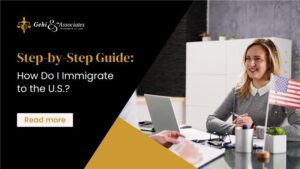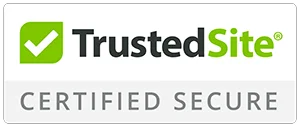Every year, hopeful immigrants ask, “How do I immigrate to the U.S.?” This requires careful planning, legal expertise, and a deep understanding of visa options, application procedures, and potential obstacles. Whether you are seeking employment, family reunification, investment opportunities, or humanitarian protection.
Understanding the immigration system is crucial. Without the right knowledge, many applicants face long delays, unexpected denials, and costly avoidable mistakes. A Queens Immigration Attorney can walk you through everything you need to know about immigrating to the U.S.
Our attorneys cover the most strategic visa options, avoid common errors, and employ lesser-known pathways. All of which can significantly speed up the immigration process. Are you considering making Queens, NY, your new home? We provide insights into local resources and legal support systems available to immigrants.
- New York City approved 372,100 H-1B petitions between 2017 and 2022, the highest number in the U.S.
- The USCIS premium processing fee increased to $2,805, with expedited processing cutting wait times from months to 15 days.
- Over 758,994 H-1B registrations were submitted in 2024, but only 188,400 were selected.
- In 2025, the H-1B visa lottery received 470,342 eligible registrations, a 38.6% drop from 2024, indicating stricter controls.
- The EB-2 NIW approval rate plummeted from 79.99% in 2023 to only 43.31% in 2024, showing increased scrutiny.
- The EB-5 investor visa offers a direct path to a green card for investors who invest at least $800,000 in a Targeted Employment Area or $1,050,000 elsewhere, allowing for permanent U.S. residency.
How Do I Immigrate to the U.S. Using the Least Competitive Visa Categories?
Many immigration applicants face rejection due to the high competition in popular visa categories. This stiff competition significantly reduces the chances of success, especially for applicants with only a bachelor’s degree. Their selection odds have dropped from 21.6% in 2020 to just 12.37% in 2024. Rather than contending with such odds, those wondering, “How do I immigrate to the U.S.?” may find a more strategic approach by exploring less competitive visa pathways.
Visa Approval Trends
Approval rates for different visa categories fluctuate based on shifting immigration policies and the application volume. For instance, the EB-2 National Interest Waiver (NIW) has historically maintained high approval rates. However, this trend changed drastically in 2024. The EB-2 NIW approval rate plummeted from 79.99% in 2023 to 43.31% in 2024, marking a 46% decline.
These trends indicate that while employment-based visas remain viable, stricter adjudication policies make approvals more challenging. This affects applicants who cannot demonstrate their contributions to the U.S. economy.
Investor-Based Visas
The E-2 investor visa remains an attractive alternative to the highly capital-intensive EB-5 immigrant investor visa. The EB-5 requires a minimum investment of $800,000 in a Targeted Employment Area or $1.05 million elsewhere. The E-2 visa offers flexibility with no fixed investment threshold. It also grants faster entry, often within months, compared to the years-long EB-5 backlog. However, it is only available to nationals of countries with qualifying treaties with the U.S. This makes it an option limited by nationality rather than financial capacity.
Special Work Visas
These visas are designed for individuals with specialized skills. If you’re wondering, “How do I immigrate to the U.S.?” Extraordinary talent, options like the O-1 visa for exceptional ability and the P visa for athletes and entertainers may be ideal. These visas often face less competition than the oversaturated H-1B category.
The O-1 visa requires a strong portfolio demonstrating national or international recognition. However, its approval rate remains significantly higher than the H-1B selection rate. Additionally, these visas do not face an annual cap. This provides an advantage for eligible candidates over the lottery-based H-1B system.
Alternative Humanitarian and Diversity Visas
For individuals from underrepresented countries, the Diversity Visa (DV) Lottery offers a path to a green card. One that does not require employer sponsorship or family ties. The DV Lottery has an annual limit of 55,000 visas. However, it remains one of the few immigration programs where applicants can directly secure permanent residency through random selection. Additionally, asylum-based visas provide direct green card eligibility for those fleeing persecution. Often bypassing the employment-based immigration queue entirely.
Mistakes That Delay the U.S. Immigration Process
Many immigrants make preventable mistakes that add months or even years to their application timeline. A single oversight can cause setbacks that are difficult to recover from. This includes failing to submit required documents, missing a deadline, or providing inconsistent information. If you’re wondering, “How do I immigrate to the U.S.?” proactively addressing these common errors is key. Taking the right steps early can improve your chances of a smooth immigration process while avoiding unnecessary expenses.
Incomplete or Incorrect Documentation
One of the leading causes of delays and denials is submitting applications with missing or incorrect information. The USCIS strictly enforces documentation requirements. A small omission can trigger a Request for Evidence (RFE), causing weeks or months of delay. Some common documentation errors include leaving required fields blank, using outdated forms, or failing to provide translated documents where necessary.
To prevent these errors, applicants should carefully review all forms. All submitted forms should align with USCIS guidelines. A proactive approach includes using the most recent versions of USCIS forms. Verify that every section is completed accurately and keep copies of all submissions. If you are unsure about any part of your application, consult an experienced immigration attorney. They can help identify and correct potential errors before submission.
Paying the Wrong Fees or Using Incorrect Payment Methods
Each immigration application requires a specific filing fee, which is subject to periodic changes. Submitting an incorrect amount or using an unauthorized payment method can lead to the immediate rejection of your application. Additionally, USCIS does not issue refunds for incorrect payments. This means applicants must refile and pay again, adding unnecessary costs and delays.
Always verify the latest fee amounts on the USCIS website before submitting your application. Payments should be made through approved methods such as checks, money orders, or credit card payments. Using Form G-1450, as specified by USCIS guidelines.
Choosing the Wrong Visa or Green Card Category
Applying for an incorrect visa type is a costly mistake that leads to unnecessary rejections. Understanding “How do I immigrate to the U.S.?” with the right visa is crucial to avoiding setbacks. For example, an individual who applies for an H-1B visa without meeting the “specialty occupation” requirements will face immediate denial. Similarly, green card applicants who fail to demonstrate eligibility under their chosen category can have their cases denied or delayed.
It is important to research the eligibility criteria for your specific visa type. Review the USCIS Policy Manual and seek legal advice to determine the best pathway for your situation. Making an informed decision at the start of the process can save significant time and resources.
Ignoring USCIS Processing Times and Deadlines
Every visa or green card application follows specific processing timelines. This timeline varies based on application type, USCIS workload, and country of origin. If you’re wondering, “How do I immigrate to the U.S.?” these timelines are crucial. Failure to adhere to them can result in losing your legal status.
For instance, failing to renew a visa before its expiration can lead to overstaying. This may trigger bars on future reentry. Likewise, missing deadlines for RFEs can result in USCIS denying your case outright. Applicants should track deadlines using a well-organized calendar system. Submitting applications and responses well before deadlines helps account for unexpected delays. Additionally, staying informed about changes in processing times through the USCIS Case Status tool can help manage expectations.
Falling for Immigration Scams and Misinformation
The immigration process is highly regulated. Yet, many immigrants fall victim to fraudulent consultants and unauthorized legal advisors who promise quick approvals or guaranteed outcomes. Common scams include fake visa consultants charging exorbitant fees, fraudulent job offers leading to visa denials, and misleading advice. This results in applicants submitting incorrect forms.
Always rely on official sources such as the USCIS website, the U.S. Department of State, and reputable immigration attorneys. Avoid any service that guarantees a visa approval or asks for payments through untraceable methods.
Protect yourself from fraud! Learn about common U.S. immigration scams and how to avoid them.
How to Immigrate to Queens, NY?
Queens, NY, remains one of the most culturally diverse boroughs in the U.S. This makes it a top choice for those asking, “How do I immigrate to the U.S.?” It has strong immigrant-friendly policies, growing economic opportunities, and accessible legal assistance. Queens is an ideal destination for newcomers seeking to build a future in the U.S.
Visa Options for Moving to Queens
Immigrants moving to Queens typically enter the U.S. through family sponsorship, employment-based visas, or humanitarian programs. Family-based visas are among the most common pathways, particularly through immediate relative (IR) and family preference (F) categories. These visas allow spouses, parents, children, and siblings of U.S. citizens or green card holders to relocate to the U.S.
Employment-based immigration is significant in bringing skilled professionals and investors to Queens. The EB-2 and EB-3 visa categories cater to highly skilled workers and professionals. The EB-5 visa offers a path to residency for investors willing to create jobs in the borough. Additionally, asylum seekers and refugees find a supportive environment in Queens, with access to legal assistance and community-based aid programs.
Employment and Business Opportunities
Queens’ economy is fueled by key industries such as healthcare, retail, hospitality, and technology. The borough has a high concentration of immigrant entrepreneurs, many of whom own small businesses, restaurants, and retail stores. Nearly 22% of New York State’s population are immigrants. Queens stands out as a hub for those seeking to establish new enterprises. It also provides a ready community of immigrants who have adapted into the system.
Housing and Cost of Living
Compared to Manhattan, Queens provides more affordable housing options, making it a preferred choice for many immigrants. Neighborhoods like Jamaica, Elmhurst, and Jackson Heights offer budget-friendly rental options. These options still provide convenient access to public transportation and employment hubs.
However, it is important to note that New York has one of the highest costs of living in the U.S. Rent prices have steadily increased in recent years, reflecting the borough’s growing demand for housing. Despite the rising costs, Queens remains an attractive location. This is due to its strong public services, access to diverse communities, and economic opportunities.
Speak to a Queens Immigration Attorney Today
Wondering, “How do I immigrate to the U.S.?” The process can be challenging and filled with legal complexities. Whether you apply for a work visa, investment-based green card, or family sponsorship. Every decision affects how quickly and successfully you can establish yourself in the U.S. However, your journey can be smoother, faster, and more successful with the right strategy. At Queens Immigration Attorney, we work to improve your chances of approval. Book a free consultation today!





